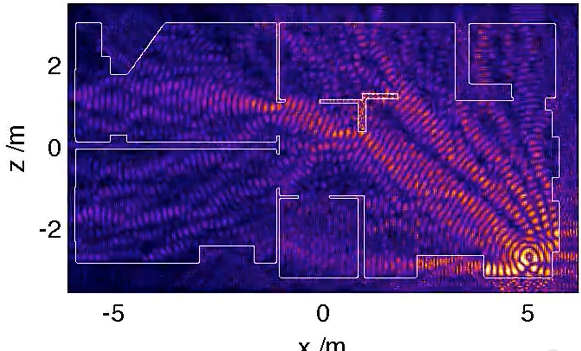One apartment’s Wi-Fi dead zones, mapped with a physics equation
Ars Technica » Scientific Method 2014-08-27

A home's Wi-Fi dead zones are, to most of us, a problem solved with guesswork. Your laptop streams just fine in this corner of the bedroom, but not the adjacent one; this arm of the couch is great for uploading photos, but not the other one. You avoid these places, and where the Wi-Fi works becomes a factor in the wear patterns of your home. In an effort to better understand, and possibly eradicate, his Wi-Fi dead zones, one man took the hard way: he solved the Helmholtz equation.
The Helmholtz equation models "the propagation of electronic waves" that involves using a sparse matrix to help minimize the amount of calculation a computer has to do in order to figure out the paths and interferences of waves, in this case from a Wi-Fi router. The whole process is similar to how scattered granular material, like rice or salt, will form complex patterns on top of a speaker depending on where the sound waves are hitting the surfaces.
The author of the post in question, Jason Cole, first solved the equation in two dimensions, and then applied it to his apartment's long and narrow two-bedroom layout. He wrote that he took his walls to have a very high refractive index, while empty space had a refractive index of 1.
Read 3 remaining paragraphs | Comments